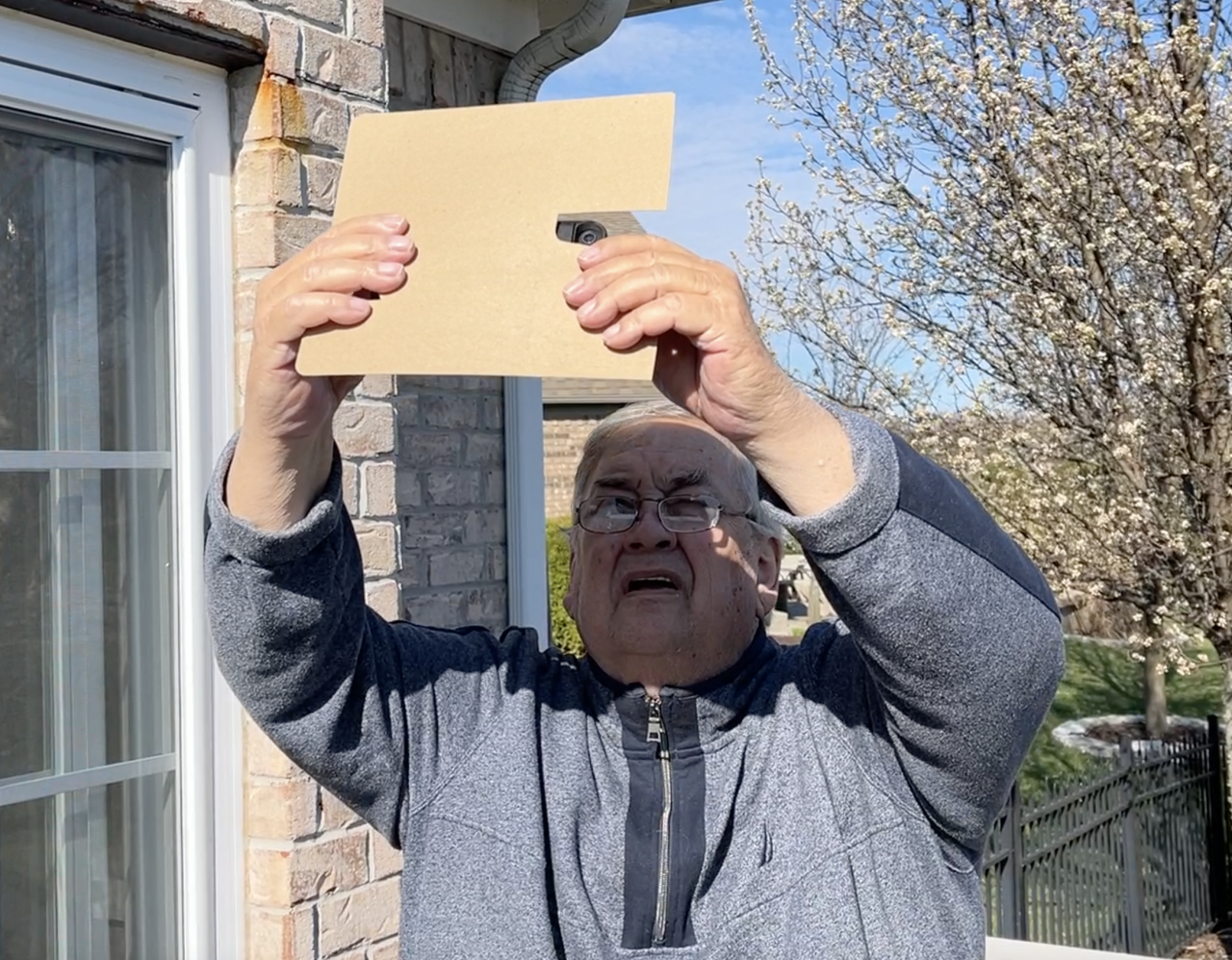INDIANAPOLIS — When Central Indiana experiences a total solar eclipse on April 8, many of us will be tempted to take pictures with our smart phones.
Veteran news, art and landscape photographer Rob Goebel urges you to protect your phone — and your eyes — from the sun’s bright rays.
"Taking pictures of the sun before the total eclipse is just really difficult to do with a cell phone because it's so bright," Goebel said. "It's so much brighter than the tolerances of the camera can handle."
Goebel spent 30 years as a photographer with the Indianapolis Star and now runs his own graphic illustration business. If you plan on taking pictures of the eclipse with your phone, Goebel has some tips.
Don't aim directly at the sun
First, he said, avoid pointing the camera directly at the sun. And, whatever you do, don't look at the sun without those special glasses.
"Look at these. Talk about a fashion statement," Goebel said, putting a pair of cardboard eclipse glasses on his face. "These are incredibly dense. They're like, if you took the brightness of the sun and you cut it in half, 15 times, that's how much this filters out the sun."

Use a filter or an old phone
Goebel said if you try putting the eclipse glasses over your phone's camera and taking a picture of the sun, the image comes out fuzzy.
He said you can buy a special filter for your phone's camera for about $10.
Or, he said, you can use an old smart phone knowing that the one shot of the sun could be the last decent picture it ever takes.

Block the sun to protect your eyes
If you plan on shooting the sun before and after totality, Goebel advised using something to help you aim the camera without hurting your eyes.
He used a piece of cardboard to make a sun blocker.
“And I've made this little doohickey," he said. "It's just a piece of cardboard, and then I cut out some slots where my hands go. And then this space in the middle here is where the phone goes."

Wait for totality
The whole eclipse will last several hours, but the time of totality, when the sun is completely blocked by the moon, will only last a few minutes.
"When you reach the total eclipse, that magic two minutes where you can look at the sun safely, you won't be able to see it through these glasses," Goebel said. "Then, you know it's time to take off the glasses."
2017 Solar eclipse as seen from Madras, Oregon.
Goebel said that's the time to aim high and shoot the sun.
"You can just point your camera up there and shoot a picture," he said. "And with a cell phone camera, you're gonna get a pretty good picture."
Great pictures won't all be in the sky
Watch the ground for cool shadows, like the ones Goebel photographed during a partial eclipse in 1994.
"I was standing on Delaware Street shooting up at the sky and I noticed that on the sidewalk by my feet were these little crescent rings of light," Goebel said. "I shot one like that of just circles and traffic going by on Delaware Street."

While the eclipse itself is a special photographic moment, Goebel said the best photos you can take with your phone are of people wearing those glasses, looking at the sky.
And he said to take plenty of pictures of your friends and family enjoying themselves during this amazing, once-in-a-lifetime event.
Contact WRTV reporter Vic Ryckaert at victor.ryckaert@wrtv.com or on X/Twitter: @vicryc.










